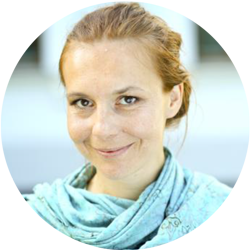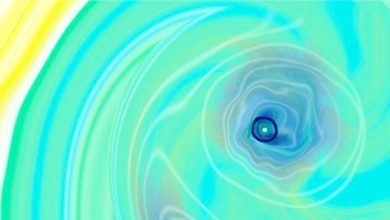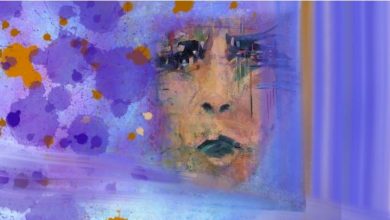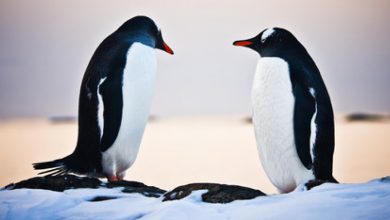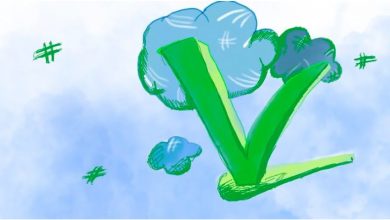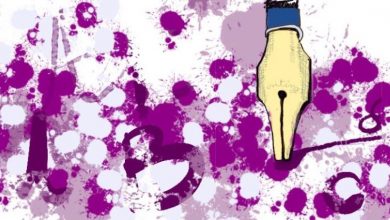How could a Visual Dialogue Empower a Self-Directed Learner?
“There is a relationship between self-directed learning readiness and creativity. It is a moderate relationship but offers confirmation of the idea that these two concepts are linked.” Barry F. Cox >>This article presents a unique technique which uses one of the oldest languages—visual expression—as an impulse to overcome impasses.
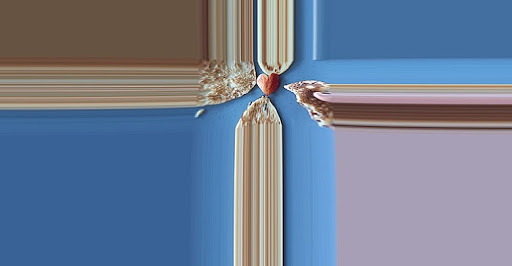
Why did I choose this tool?
The visual language enters the world of unspoken messages, which can open a new understanding of oneself. Learning to learn competence is about revealing inner resources and finding ways how to deal with reality.
How does this apply to being a trainer?
As trainers we need to stimulate ourselves in being able to work with different expressions. Perfect English or other foreign language sometimes are not enough. Sometimes the door to understanding is a metaphor, visual act of creation – here – visual language.
Main content:
The visual expression becomes a language, the two people can talk to each other.
A tendency of blending visual art with other disciplines is becoming nowadays very common, for example medical schools across the USA are increasingly incorporating art classes into their programs, not to mention educational programs at ordinary schools. And still in most of these cases one very important element is missing – which is CO-CREATION, togetherness, resonance in the act of visual expression.
The process I want to present here does not focus on a solitary work of a learner; on the contrary, it opens a dialogue with an educator (or a peer).
In visual language we can act similarly to the verbal language: we can ask questions, discuss, disagree and reflect.
Example:
We can ask visually closed and open questions. I consider “question” as a trigger/stimulus for conversation.
Open questions would invite the respondent to react freely, giving him space for expressing his own emotions, opinions, so the conversation would be more in balance in terms of holding the flow. (FIGURE 1)
Closed questions would provide facts and also they’ll be easy and quick to answer and would keep the frame of a conversation. The answers would be very simple, sometimes even in the form of Yes/No answers. (FIGURE 2)

It is worth to mention at this point the leaders in neurasthenics Hubel and Wiesel who “demonstrated that instead of responding to pixels, cells in the visual cortex respond to straight lines and angles of light. The neurons prefer contrast over brightness, straight edges over curves; contrasts allow us to more efficiently pick out objects” (Unlocking the Mysteries of The Artistic Mind, By Jonah Lehrer, published July 1, 2009)
Talking through visual expression emerged as a technique.
Through analysis, research and effect-comparative sessions, it appeared that this technique enables a direct contact with a client in a more natural way.
It reaches, in a non-invasive way, the realms of unknown sources, which can trigger a change.
This is a developmental process based on creating a visual image with a learner.
During numerous sessions conducted with various personalities in an art studio, 4 major processes emerged, which can lead a young person to strengthen their self-agency in everyday life.
HOW TO BECOME VISIBLE?
HOW TO REDISCOVER YOUR DREAMS AND MAKE YOUR OWN CHOICES?
HOW TO REGAIN ONE’S ENERGY?
HOW TO BECOME A BUTTERFLY?
The first process – from stagnation to action „How to become visible?” illustrates the process constructed only around closed visual questions, allowing the learner just to follow what was appearing on the canvas.
Second process, HOW TO REDISCOVER YOUR DREAMS AND MAKE YOUR OWN CHOICES?
From the feeling of being overloaded with too many possibilities to clear and focused vision; it illustrates the process starting from an open visual conversation with abstract lines and shapes (exploration) and ending with a concrete visual image.
Movie:
In both cases we worked over an impasse, impasse which was provoked by two radically different situations (fear and low self-esteem in the first case and confusion and overload in the second one).
Why did it work out?
“Problem solving is marked by impasses, particularly when the solution requires “outside the box” thinking”, novelty, new perspective. It has been shown that impasses are broken by the relaxation of constraints (Knoblich, Ohlsson, Haider, & Rhenius, 1999). One common method to overcome impasses is known as incubation, which “refers to the process of removing a problem from conscious awareness temporarily as means of gaining new perspectives on how to solve it” (Finke, 1996, p. 389). It is possible that incubation is successful because it leads to the spontaneous processing mode, which in turn results in the relaxation of constraints” (The cognitive neuroscience of creativity by Arne Dietrich). And in this case, the visual language could be treated as spontaneous and free from assumptions way of exploration.
Exercise:
Try to understand in which state you are:
- Are you open for searching in ambiguity, or
- Rather you are in the need of clear and precise directions?
If „A” – formulate an open question and start to draw or paint on a white paper. If you have someone around you, invite the second person who would try to be complementary with you. While you paint, try to talk freely about what you see or what you feel you need to draw next. When the picture is ready, you will feel it.
If option „B” – formulate a closed question and look for a paper with some shapes on it, like a coloring book for children or adults. Choose 1 image. Try to color it in your own way. If you are with somebody, even better, try to paint one shape simultaneously. Decide what comes next. Which colors you want to use, which shapes you want to combine, which lines you want to hide, which elements you need to make more visible. It all matters.
Reflection questions:
- What have you discovered about yourself?
- Which way of drawing was more familiar to you?
- How would you develop this exercise?
- How was it to create the same image with a second person?
- What have you learnt about yourself?
